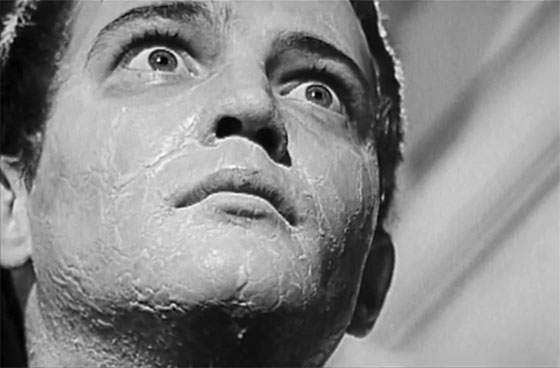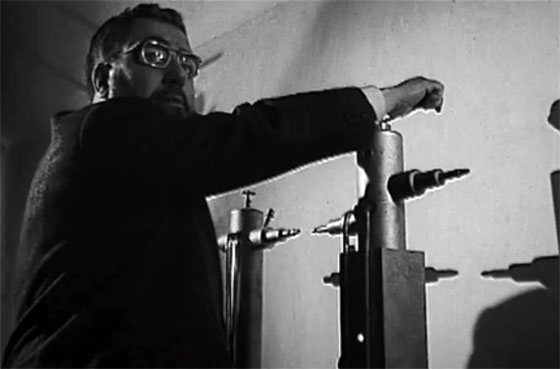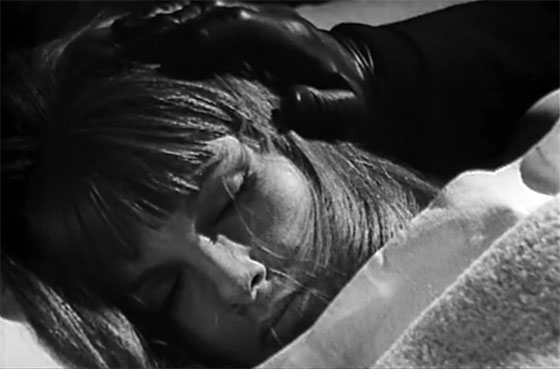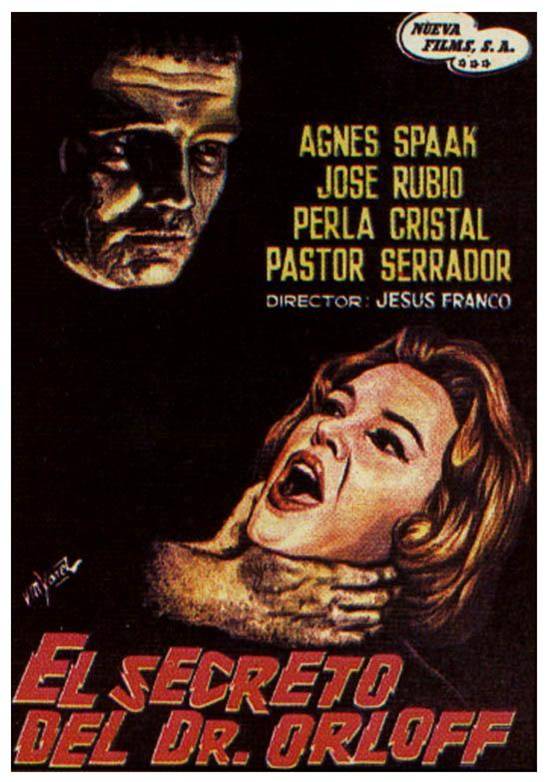
Jess Franco’s The Awful Dr. Orlof (Gritos en la noche, 1962), despite its Z-grade budget and numerous limitations, crafted a template for the many, many Franco exploitation films to come. He built upon Universal Frankenstein films and the sensual qualities of contemporary Hammers to create a kind of Gothic erotica – more prurient and mercenary, certainly, but also dream-like, stylish, and strange. The necessary sequel, Dr. Orloff’s Monster (El secreto del Dr. Orloff, aka Les Maitresses du Docteur Jekyll, 1964), is a better film all around: more dream-like, more stylish, and more strange. It’s transparent that Franco just enjoys making movies, thrilled to be behind the camera. One shot opens, apropos of nothing, on a brightly-lit painting of Charlie Chaplin’s Tramp, pulling back slowly to reveal two silhouettes in the foreground exchanging dialogue. What to make of this except that Franco was trying to avoid another dull exposition scene? (That, and he loves Chaplin, and thought to mention it.) Between so many breathlessly delivered dialogue scenes, Franco settles for silence and atmosphere, watching his central monster, Andros (Hugo Blanco of Franco’s The Sadistic Baron von Klaus), clad in black, stride through graveyards and shadowy passages in homage to the somnambulist of The Cabinet of Dr. Caligari (1920), though with a certain resemblance to Christopher Lee’s monster in The Curse of Frankenstein (1957), and, of course, the unblinking murderer of the previous Orlof outing. It’s like a palimpsest of overlaid horror movie frames, the wet dreams of an adolescent asleep with monster movie mags scattered around his bed.

Not Dr. Orloff, but a fan: Marcelo Arroita-Jáuregui as the vengeful Dr. Fisherman, at work in his castle’s secret laboratory.
This is an indirect sequel, its connection to the previous film being the similar plot and scene repetitions (nightclub/murder/lab, repeat). In other words, it’s a film for those who liked what they got before, and want more. Our mad doctor this time around is Dr. Fisherman (Marcello Marcelo Arroita-Jáuregui, later of The Diabolical Dr. Z), who in the opening scene is agreeing to carry on the experiments of a dying scientist (Orloff?), who believes that humans can be surgically transformed into cyborgs, then manipulated like puppets with certain radio frequencies. We next see him at work in his secret laboratory high in his castle, proving this theory with his android named Andros. At night, Andros visits nightclubs and strangles female jazz singers and exotic dancers. Arriving at the Fisherman castle is his beautiful niece Melissa (Agnès Spaak, Sweet Ecstasy), about to celebrate her 21st birthday; her uncle promises she will inherit the castle someday. At night, Melissa overhears her bitter, alcoholic aunt Ingrid (Luisa Sala) screaming “You murderer! You killed him!” over and over in her sleep. As Melissa will learn later, Ingrid had an affair with Dr. Fisherman’s brother, and in revenge Fisherman stabbed him in the back of the neck with a scalpel. Andros is actually Fisherman’s dead brother, now controlled by the doctor’s radio-pulse commands, killing seductive women in a misogynistic spree fueled by sexual jealousy.

Melissa (Agnès Spaak) is visited at night by the walking corpse of her dead father.
For all its obvious flaws that come part and parcel with low-budget Franco exploitation films – depending on the variant you’re watching, there may or may not be gratuitous nudity, and Dr. Fisherman may or may not be Dr. Jekyll (!) – Dr. Orloff’s Monster still delivers a more effectively poetic atmosphere which lovers of this brand of cinema should embrace. For one thing, Franco pays homage to silent cinema, not just through a visual reference check to The Tramp, but through Andros’s inability to speak. When he first visits Melissa at her bedside, tenderly stroking her hair, his eyes light with recognition, fatherly love, and apprehension. Melissa similarly is struck with Andros’s resemblance to her father, and Franco focuses his camera upon her awestruck gaze (Spaak’s chief asset in the film). In another scene we see Andros standing upon his own tombstone, staring down sadly. So the film is at its best when it mimics silent cinema (in these moments, crackling library music playing mournfully on the soundtrack). The dialogue itself is abdundant, clichéd, and frequently nonsensical. Franco introduces a rote love interest and an eccentric detective. This is padding of the type he’ll return to again and again in his filmography. But, happily, Franco’s heart can be found in other scenes, such as the eerie finale, in which Melissa guides her zombie/android father forward through the night, down empty streets and alleys, always just about to touch his extended hand, then drifting out of reach, beckoning him slowly toward the place where she knows he will be gunned down. I’m not exactly sure what this means, but I prefer it that way. We are in the realm of Gothic dreams.










